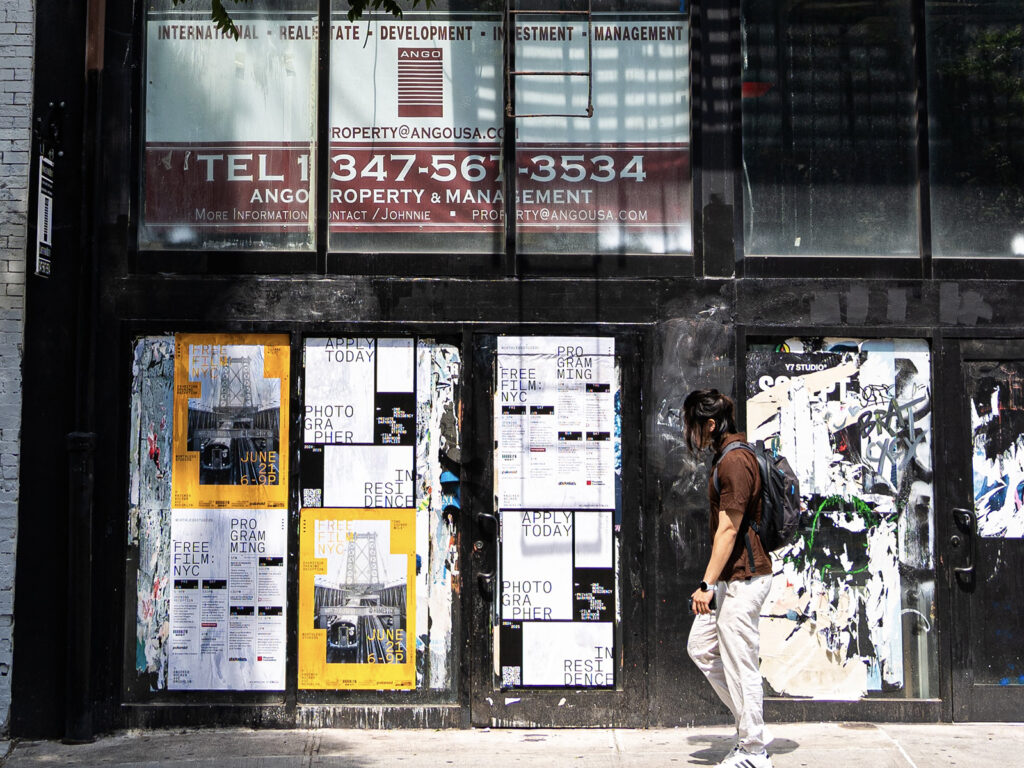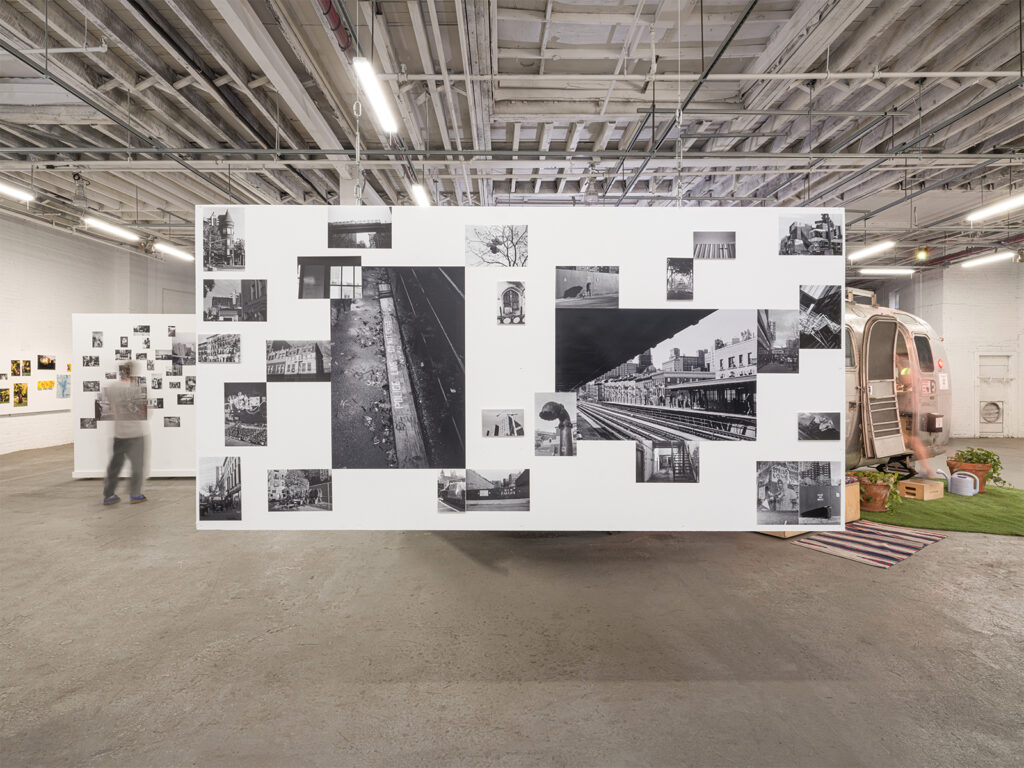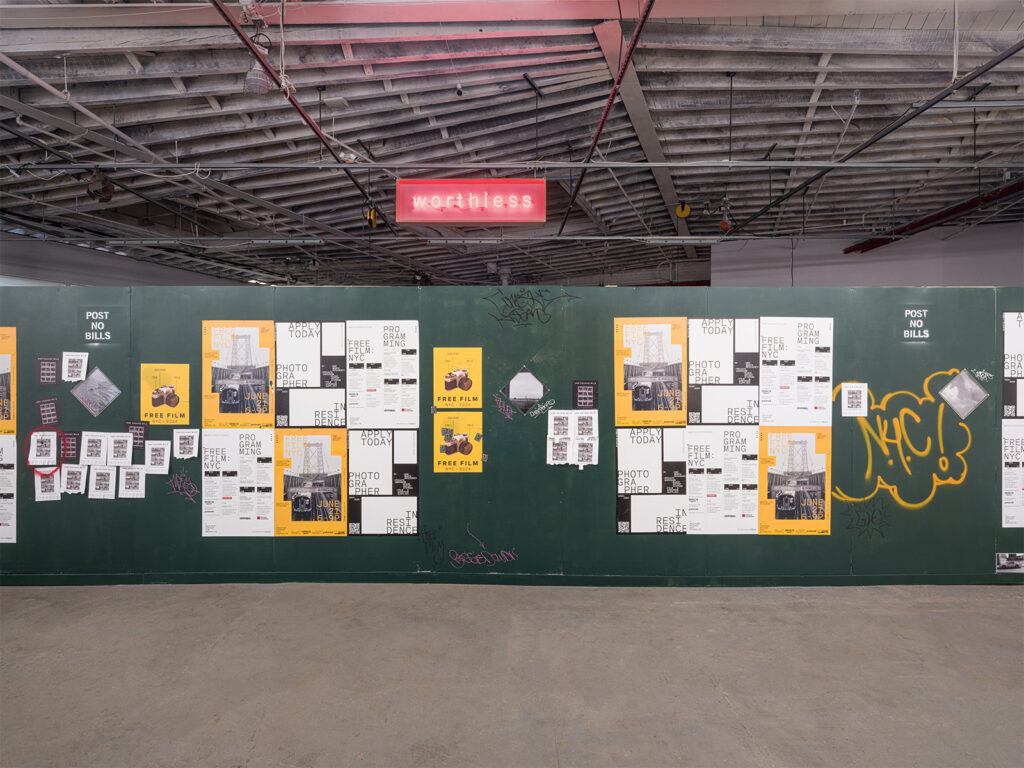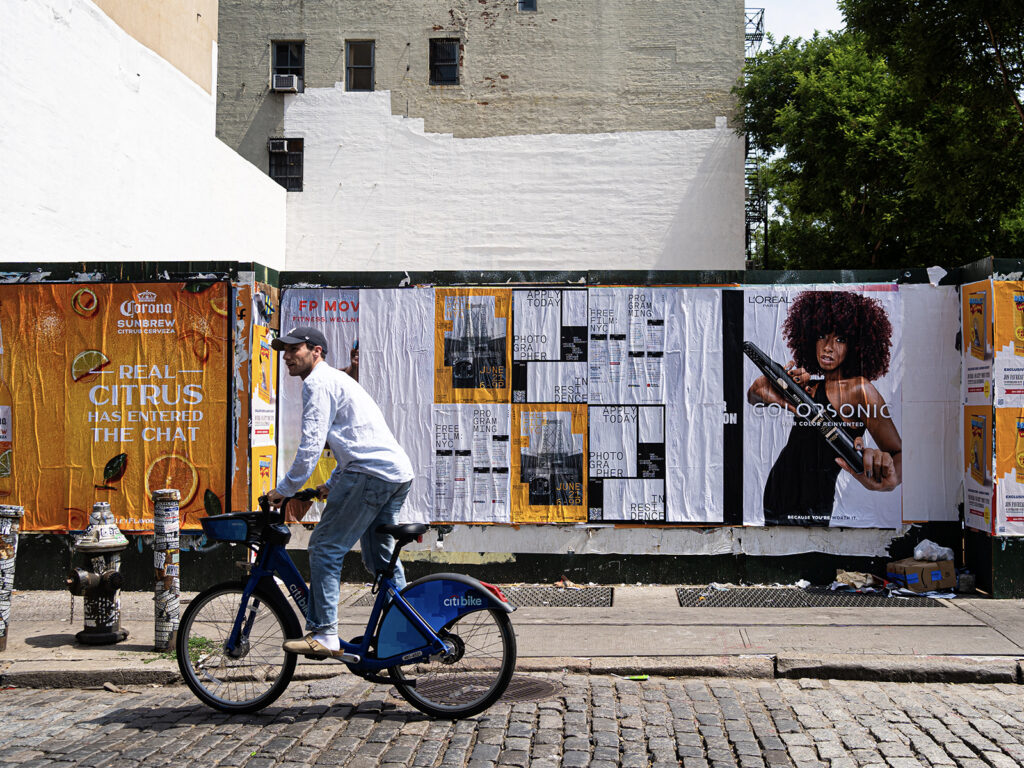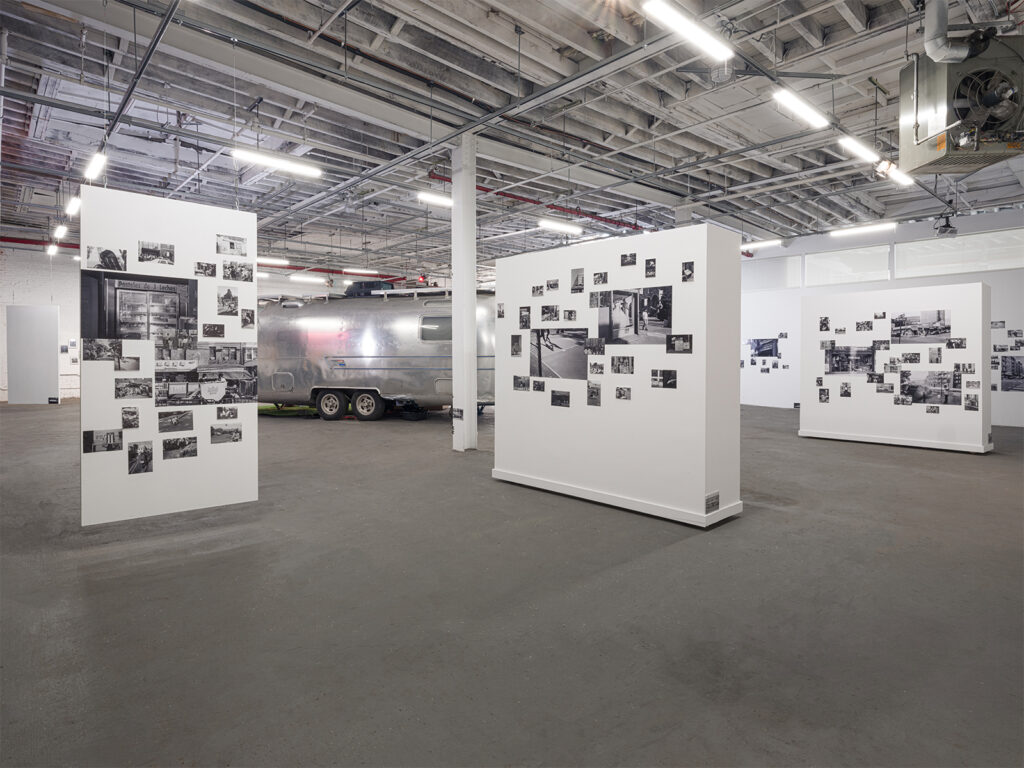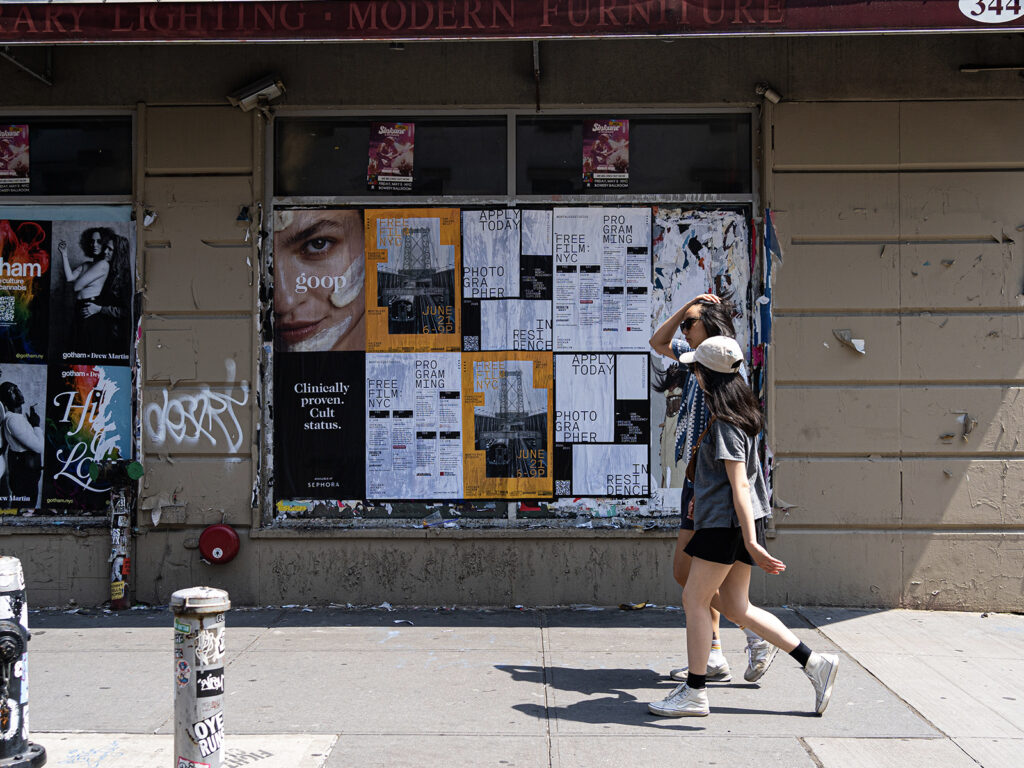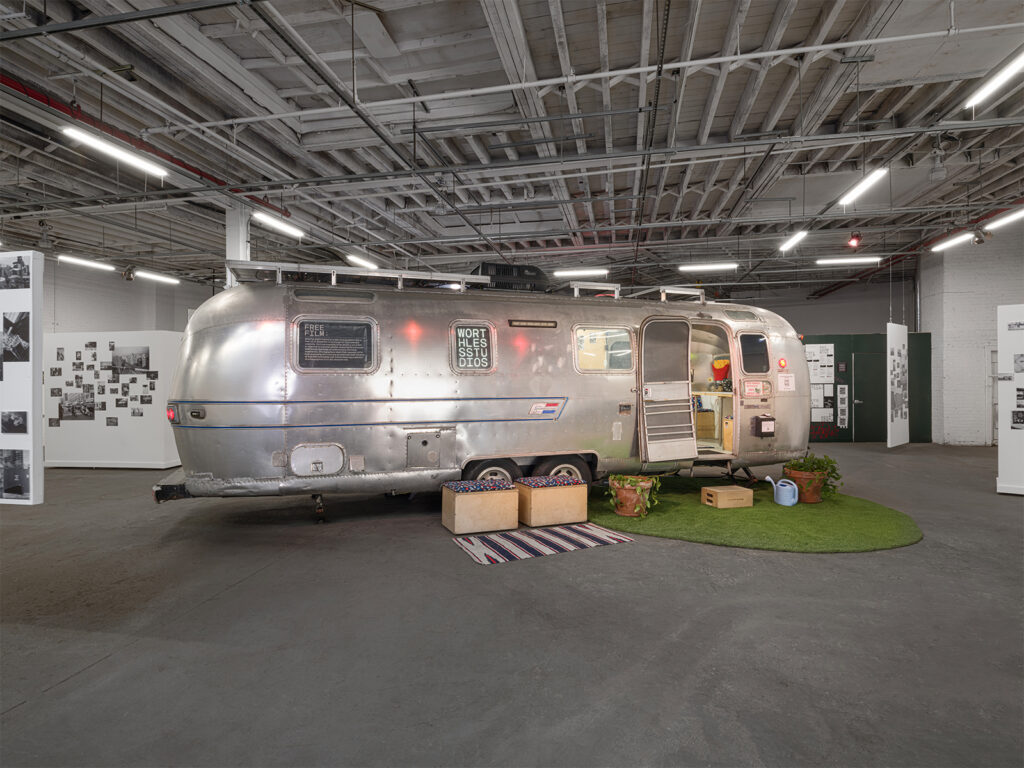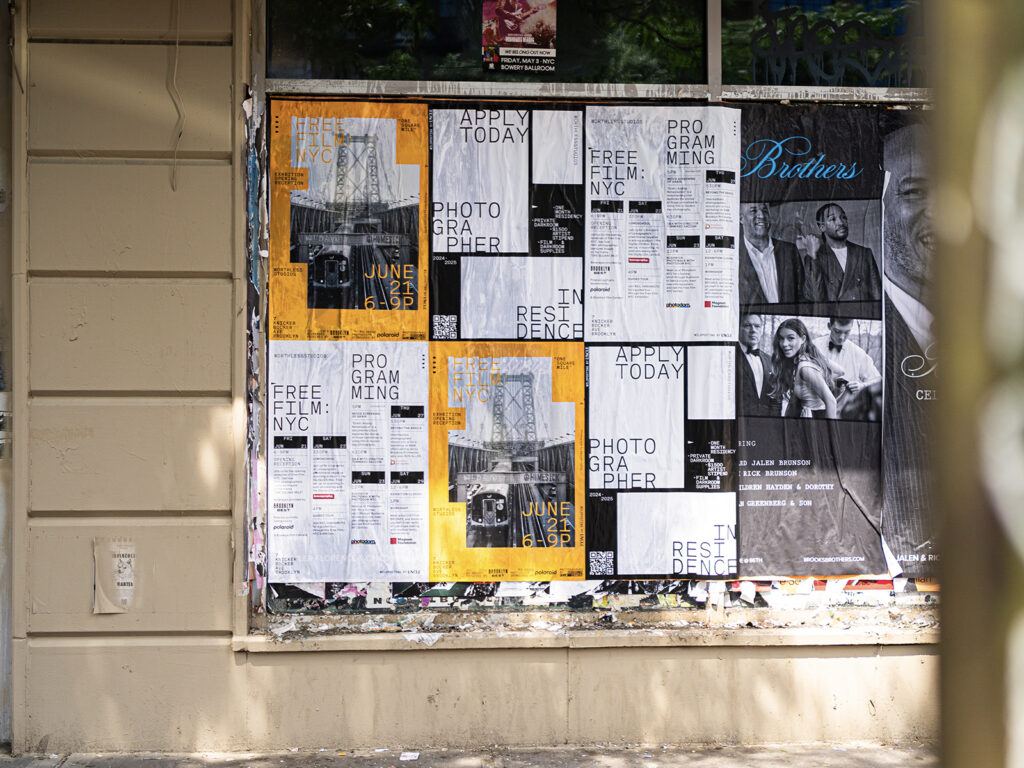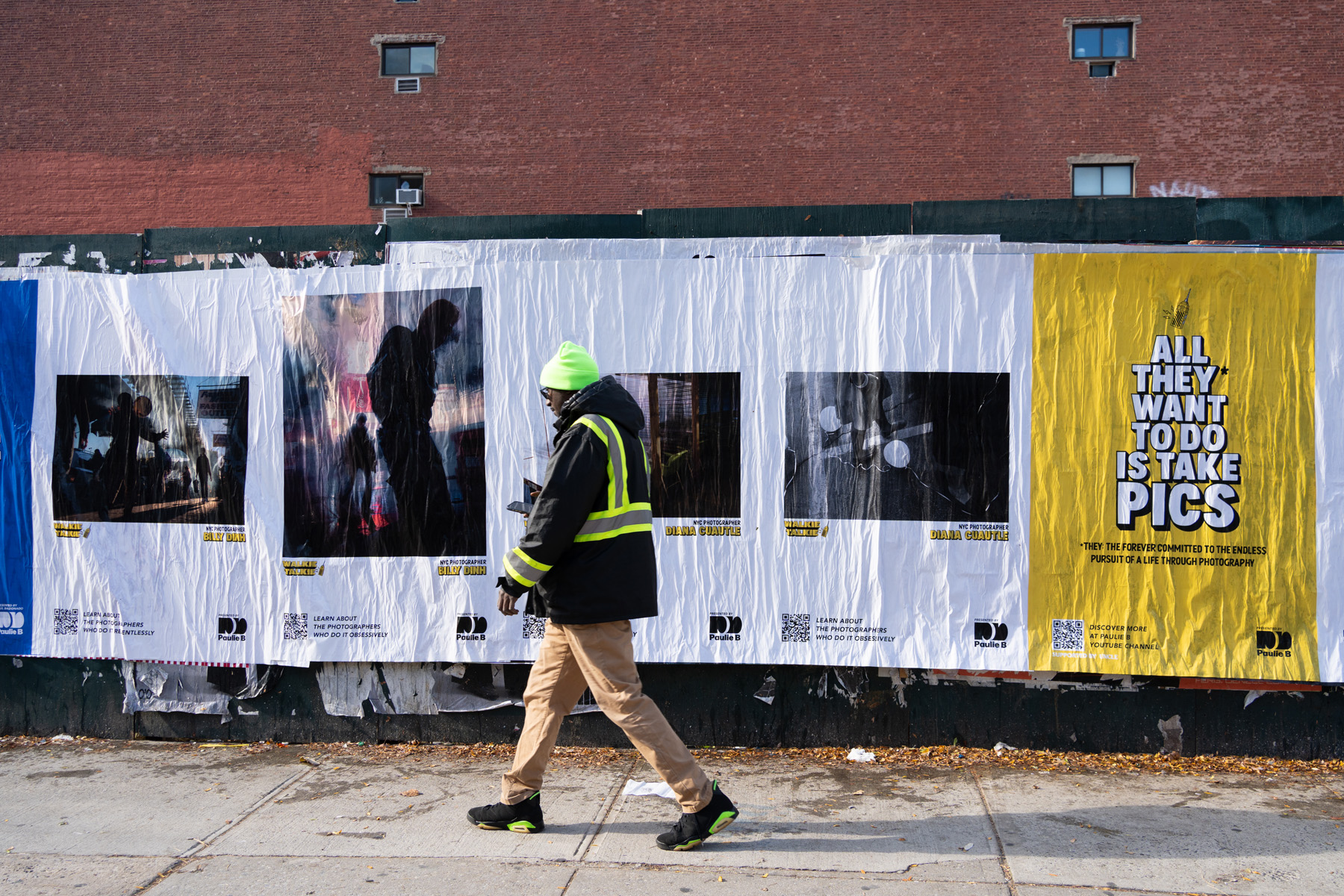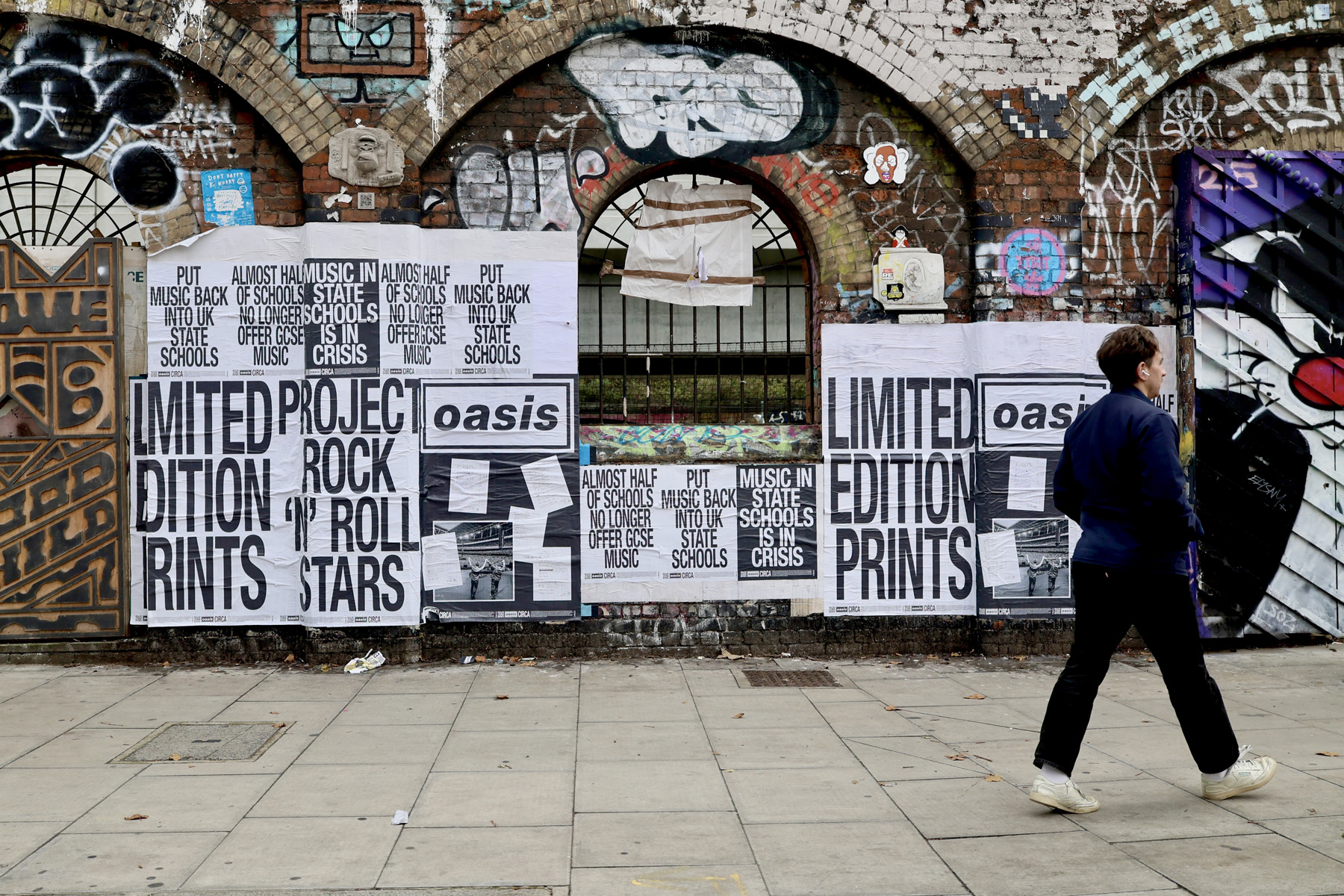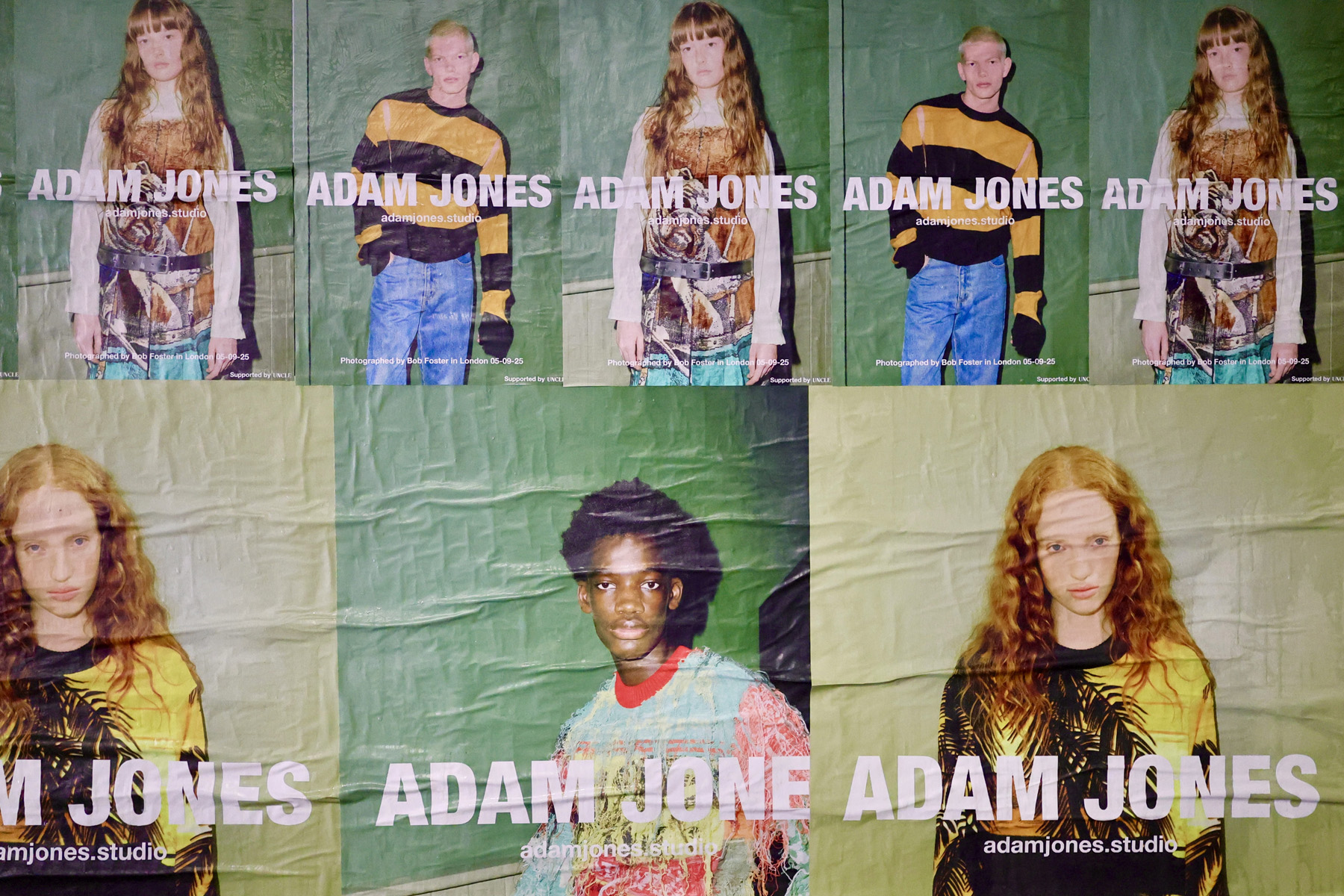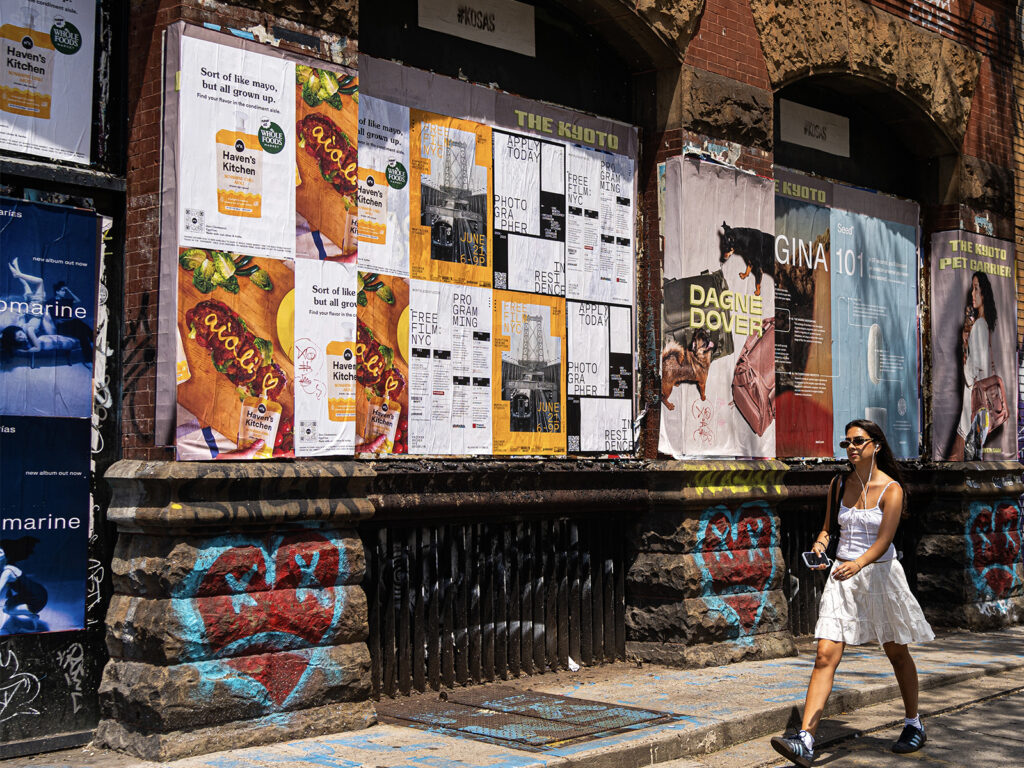
WORTHLESSSTUDIOS is an organization dedicated to fostering creativity by providing artists with the necessary space, materials, and technical support to realize their artistic visions. UNCLE partnered with them on their notable recent imitative “FREE FILM: NYC LES” a public art endeavor that engages both aspiring and professional photographers in documenting specific New York City neighborhoods using analog film. We brought their posters to city streets to drive eyes to the exhibition that focuses on Manhattans Lower East Side.
Their projects emphasize artistic activation, community engagement, and education, aiming to go beyond merely creating artwork. This ‘community first’ attitude does not go unnoticed amongst New York streets that thrive in pulling together factions and uniting them in a history driven by the city itself. This project’s prompt – “ONE SQUARE MILE,” focuses on the Lower East Side, creating a collective archive of images that encapsulate the essence of the area. Already steeped in a deep history, the exhibition acts as a point of camaraderie for the people of Manhattan and beyond.
In the interview we conducted we touched on the studio’s conception, goals and how each photographer contributing to the exhibition is tied to the location itself as well as the broader cultural narrative of New York City. We also explore the work they do outside of this project and how their residency programme elevates its members through public activities like workshops and educational courses. There is more than meets the eye to WORTHLESSSTUDIOS and UNCLE couldn’t wait to delve deeper.
CAN YOU DESCRIBE THE CONCEPT AND GOALS BEHIND FREE FILM : NYC?
FREE FILM : NYC is a public art project engaging a community of photographers, both aspiring and professional, in the documentation of specific New York City neighborhoods using analog film. Each time the program is activated we distribute 100 rolls of 35mm black-white film to local photographers for free. They bring back film shot on a specific prompt, this time “ONE SQUARE MILE”, and we develop, scan, and curate a show and book. We are interested in creating a collective archive of images that describe a time and place, and for the past two years NYC has been the focus.
HOW DID YOU CHOOSE THESE NEIGHBORHOODS AS THE FOCAL POINT FOR THIS ITERATION OF THE FREE FILM PROJECT?
We started with an open call to photographers who applied with a specific neighborhood that they have a special relationship to. They took up residency in our converted 1970’s Airstream Darkroom. During the residency, the selected photographers were asked to run activities open to the public, such as workshops and photowalks, as well as youth education programs in collaboration with our institutional partners, which we identified to serve the local community, through art and photography. The relationship the Photographer in Residence has with the neighborhood is what drove the focal point of the programs.
HOW ARE THESE NEIGHBORHOODS TIED TO A WIDER NYC?
We let the photos taken by the 150+ photographers included in our book and exhibition tell the story. Like previous iterations of FREE FILM we tend to see a lot of overlap in cultural motifs, styles, and iconography throughout the city, no matter which neighborhood you are in. However, there is a distinct attitude and geography that can be seen and felt in each neighborhood that shows how unique and bonded the individuals in the neighborhood are as a community.
WHAT HAVE BEEN SOME OF THE MOST MEMORABLE OR IMPACTFUL PHOTOGRAPHS YOU’VE RECEIVED FROM PARTICIPANTS?
A few images come into my head with this question, all very different. We had really heartwarming moments from families playing during a parade around Sunset Park, a group of young men playing basketball under the FDR Drive with the Brooklyn Bridge as the background around the Lower East Side, a few images of young girls running and playing with the open hydrants during the Bronx’s hottest summer so far. Others are very iconic places such as the Williamsburg bridge, a few churches in Harlem, Lady Liberty seen from Red Hook. Each neighborhood had its own charm, and surprising images.
WHAT ARE SOME OF THE BIGGEST CHALLENGES YOU FACED IN EXECUTING THIS PROJECT?
The biggest challenge at first was to drive the Airstream throughout the city, through the narrowest streets while cars were double parked, but the team was always able to make it work without a scratch.
With the help from picturehouse + thesmalldarkroom we were able to keep all rolls and scans in order to return to the participant photographers, without any mix up on delivering scans and negatives.
Editing the book was also a big challenge, as we collected over 15,000 images, editing down to 124 published images was a great effort, tackled between the Resident Photographers and the WORTHLESSSTUDIOS team.
HOW HAS THE PROJECT EVOLVED SINCE ITS INCEPTION, AND WHAT FUTURE DIRECTIONS DO YOU ENVISION FOR IT?
The project started in 2018 when Neil Hamamoto developed the concept to hand out free 35mm film to strangers for free as a pop up project on Canal Street in lower Manhattan. The participants of FREE FILM : CANAL had 24 hours to take all 36 exposures with the prompt “CANAL” and return the roll of film to us. We spent a week in the darkroom developing the film and using our enlargers to make silver gelatin prints of the selects that really stood out to us. We were amazed as to the way people took the concept in so many directions in such little time. As an organization seeking to assist artists through materials, space, fabrication, and one-on-one guidance we see the future of this project as a Resident Photographer-focused program that helps elevate their body of work and knowledge of the process. Our Photographer in Residence Application is now open for submissions at https://www.worthlessstudios.org/photographer-in-residence
WHAT IMPACT DO YOU HOPE “FREE FILM: NYC LES” FREE FILM WILL HAVE ON THE LOCAL COMMUNITY AND THE BROADER ART SCENE?
WORTHLESSSTUDIOS’ mission to provide space, materials, technical assistance, and resources to artists to realize their creative visions is clearly reflected in FREE FILM. One of our goals is to help photographers keep making analogue photography, as well as helping others get back into it. From years of talking with the participants, the project has been a community builder for them – they have come into a passionate group of analog photographers where they can dig deeper into their art practices.
Our hopes are that these photographers will stay connected with photography, keep practicing it and growing with it, as well as building a community between themselves and WORTHLESSSTUDIOS.
HOW DID YOU DESIGN THE VISUAL COMPONENT OF THE PROJECT?
For the FREE FILM : NYC exhibition we wanted to set a scene reminiscent of each neighborhood program: The Airstream parked in front of a green, graffiti-covered construction wall. Since the Airstream was always onsite we decided to bring it inside and create an immersive environment for the photographs surrounding it. Then we let the photographs do the talking.
When designing the posters and advertising for this project we focused on spreading awareness of our available resources and programs, hence our legibility and clarity-centered digital design.

